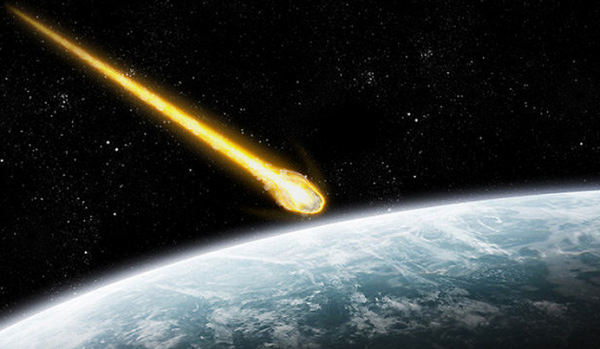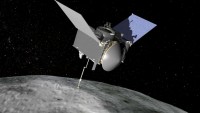NASA, FEMA Simulate Asteroid Strike on Los Angeles; Agree on the Best Option for Survival
| Arthur Dominic Villasanta | | Nov 15, 2016 08:43 AM EST |
(Photo : Reuters) An asteroid streaks towards the Earth (illustration).
NASA, the Federal Emergency Management Agency (FEMA) and other federal and California government agencies on Oct. 25 staged a "planetary protection exercise" simulating the effects of an asteroid smashing into Los Angeles.
This horrific scenario, set four years from now, posited a massive asteroid 330 feet in diameter hurtling full tilt into Los Angeles at thousands of miles an hour.
Like Us on Facebook
Held at El Segundo, the simulation projected a worst-case scenario where a stupendous blast wave destroys buildings and homes out to 30 miles from the impact crater. An explosion as mind boggling and as deadly as this would have killed thousands of people and inflicted tens of thousands of casualties.
Experts presented estimates for population displacement and infrastructure damage, as well as ways to present accurate information to the public, said NASA's Jet Propulsion Laboratory.
The scenario was based on the premise an asteroid discovered this year would hit the Earth with certainty in four years' time. What could responsible authorities do to either prevent this asteroid from striking the Earth or, failing this, what to do to minimize casualties and damage to property.
"The high degree of initial uncertainty coupled with the relatively long impact warning time made this scenario unique and especially challenging for emergency managers," said FEMA National Response Coordination Branch Chief Leviticus Lewis.
"It's quite different from preparing for an event with a much shorter timeline, such as a hurricane."
Experts, however, agreed four years isn't long enough to prepare a "deflection mission" involving building what's basically an "anti-asteroid missile" and rocketing this weapon into space to smash into the asteroid.
This would have meant only evacuation scenarios would be the more realistic options.
The simulation involved representatives from NASA's Jet Propulsion Laboratory, FEMA, the Department of Energy's National Laboratories, the U.S. Air Force and the California Governor's Office of Emergency Services.
While a warning of four years may seem like a lot of time, it probably won't be enough to deflect an asteroid of the size and orbit outlined in the simulation, said Paul Chodas, manager of NASA's Center for Near-Earth Object Studies at the Jet Propulsion Laboratory.
"Engineers think the simplest way to deflect an asteroid is to build a large spacecraft and simply ram it into the asteroid" years before it is predicted to hit Earth, he said.
It might take up to two years to build such a "kinetic impactor" spacecraft and another year or more to reach the asteroid. Because of this tedious process, an evacuation, not a "deflection mission," is necessary.
Tagsasteroid, planetary protection exercise, Los Angeles, california, NASA, FEMA, JJet Propulsion Laboratory, Jet Propulsion Laboratory
©2015 Chinatopix All rights reserved. Do not reproduce without permission
EDITOR'S PICKS
-

Did the Trump administration just announce plans for a trade war with ‘hostile’ China and Russia?
-

US Senate passes Taiwan travel bill slammed by China
-

As Yan Sihong’s family grieves, here are other Chinese students who went missing abroad. Some have never been found
-

Beijing blasts Western critics who ‘smear China’ with the term sharp power
-

China Envoy Seeks to Defuse Tensions With U.S. as a Trade War Brews
-

Singapore's Deputy PM Provides Bitcoin Vote of Confidence Amid China's Blanket Bans
-

China warns investors over risks in overseas virtual currency trading
-

Chinese government most trustworthy: survey
-

Kashima Antlers On Course For Back-To-Back Titles
MOST POPULAR
LATEST NEWS
Zhou Yongkang: China's Former Security Chief Sentenced to Life in Prison

China's former Chief of the Ministry of Public Security, Zhou Yongkang, has been given a life sentence after he was found guilty of abusing his office, bribery and deliberately ... Full Article
TRENDING STORY

China Pork Prices Expected to Stabilize As The Supplies Recover

Elephone P9000 Smartphone is now on Sale on Amazon India

There's a Big Chance Cliffhangers Won't Still Be Resolved When Grey's Anatomy Season 13 Returns

Supreme Court Ruled on Samsung vs Apple Dispute for Patent Infringement

Microsoft Surface Pro 5 Rumors and Release Date: What is the Latest?














